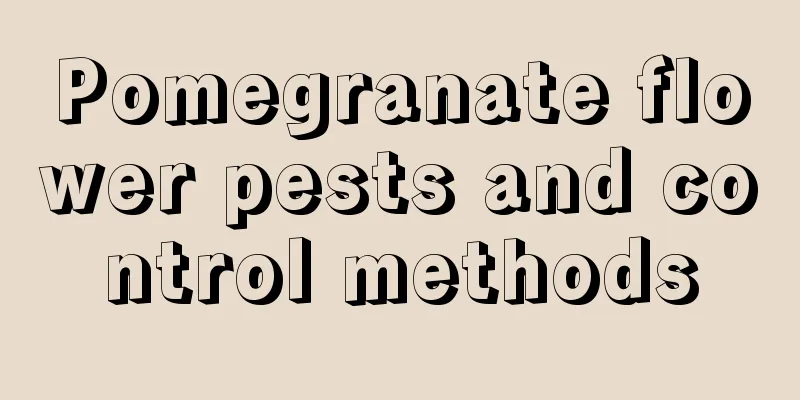Pomegranate flower pests and control methods

Pomegranate flower scale insectsymptomScale insects are common pests in home flower gardens. The larvae mainly attach to leaves or new shoots, sucking leaves and branches, and secreting mucus, which can induce sooty mold, affect photosynthesis, slow down the growth of pomegranates, cause leaves to fall, and in severe cases may cause flowers to fall and the tree to die. Prevention and treatment methodsWhen a small number of scale insects are found on branches and leaves, they can be wiped off with soapy water. Spray the pesticide in time, once every 7 to 10 days, and spray 2 to 3 times in a row to control the damage. Pomegranate stem mothsymptomAlso known as the window moth, it rarely appears in homes. The larvae will damage new branches and perennial branches, slowing the growth of the plant, affecting flowering and fruiting, and in severe cases causing the death of the entire plant. Prevention and treatment methodsDuring the pomegranate growing season, check the growth of branches frequently. If you find that the new branches are growing weak and have accumulation, cut the branches off in time to kill the larvae. Spray the pesticide in time. You can use a waste syringe or other tools to inject 400 to 500 times dichlorvos solution into the insect tunnel, or spray it directly on the branches. Aphis gossypiisymptomAdults and nymphs gather on the host's tender leaves, buds, stems, buds and flowers, sucking food from branches and leaves, causing the leaves to turn yellow and wilt, and in severe cases, the entire plant to die. Prevention and treatment methodsRemember to spray 5- degree Baume lime sulfur mixture before bringing it indoors in winter as a preventive measure. When insect pests appear on plants, it is more effective to spray 1500 times diluted 50% aphidicide emulsifiable concentrate or 800 times diluted 25% phosmet emulsifiable concentrate in time. |
Recommend
How long can fresh cut lisianthus flowers last?
1. How long can it be raised? In fact, how long f...
How to grow butt flower quickly
Butt flower growing conditions When planting the ...
How to take care of the newly bought Clivia
1. Inspection Generally, you should check it care...
Breeding methods and precautions for Star Prince
1. Maintenance methods 1. Soil: The soil for plan...
Plants suitable for balcony planting (what plants are suitable for indoor balconies at home)
First, balcony flowers I think the first type of ...
How to overwinter the bonsai of Begonia (how to care and fertilize the bonsai of Begonia in winter)
Malus scutellaria is a species of Malus scutellar...
What are the cultivation methods and precautions of Phalaenopsis?
Phalaenopsis growth habits Phalaenopsis likes a w...
How to propagate green radish by hydroponics
1. Cutting method Cut strong stems and vines, con...
How to repot hydrangea? What should I pay attention to?
Hydrangea is a common ornamental plant. Its flowe...
What flowers can be grown with charcoal ash
1. What flowers can be grown? Charcoal ash can be...
How to grow double happiness flowers at home
Growth conditions of Double Happiness Flower The ...
The best way to improve soil: 8 major measures commonly used to improve soil quality
Use soil conditioners Soil conditioners can impro...
How to make roses bloom
1. Breeding methods 1. Soil: Roses prefer well-dr...
What is the meaning of bamboo in life and what spiritual qualities does it symbolize?
1. The meaning of life 1. Simplicity: Bamboo can ...
What flowers are suitable for growing in Yichang? What are the city flowers and trees?
1. Climate characteristics of Yichang Yichang is ...









